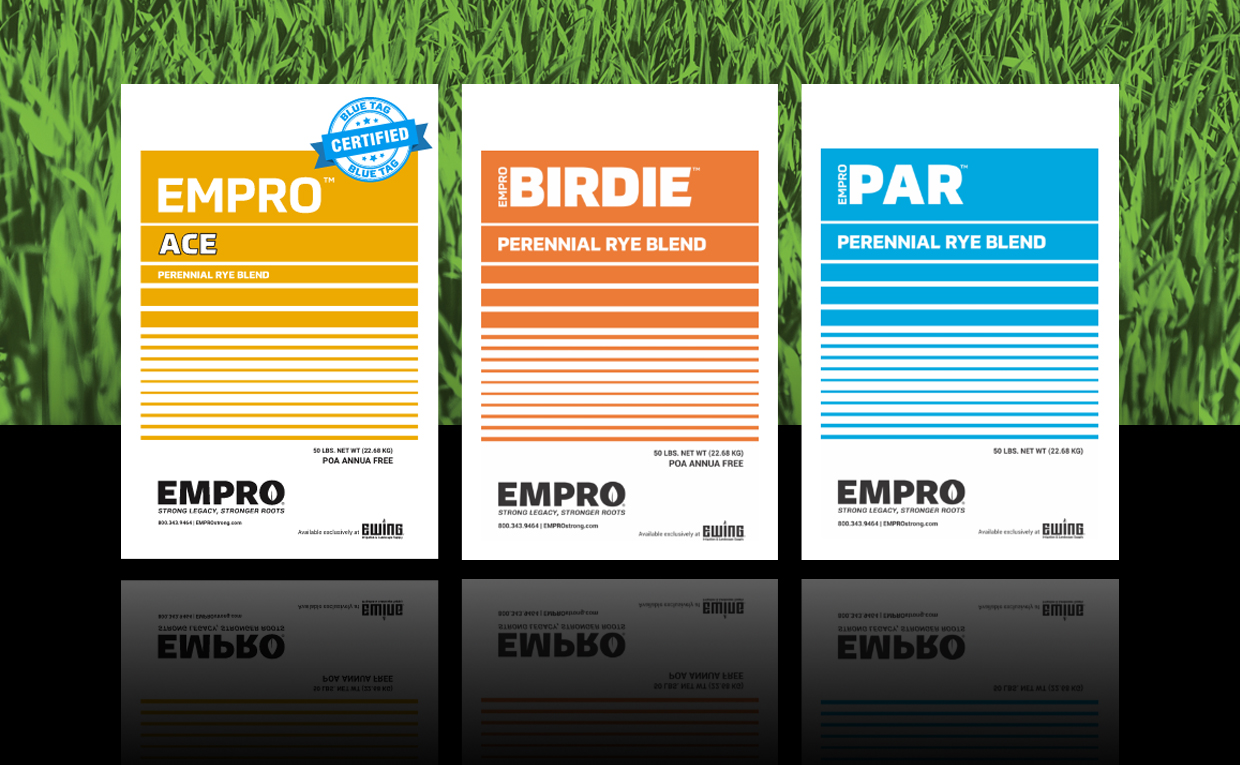The tag on a bag of turf seed can provide a wealth of information about the type of seed you’re about to purchase. You may want a different quality of seed at a different price point depending on the job, and reviewing a seed label is a great way to determine which blend is right for the job site. While the overall appearance of a seed label may vary, focus on these three areas of the label to find the seed you need.
Seed Brand and Variety
 The brand name of the grass seed typically appears near the top, which is useful information because some brand names are well known for their quality products. Offered exclusively at Ewing, EMPRO products offer a consistent quality of seed at affordable prices. EMPRO three-way seed blends are selected for their excellent performance in the National Turfgrass Evaluation Program's (NTEP) field trials. Select EMPRO seed bags have also received the Blue Tag certification as part of our commitment to providing quality products.
The brand name of the grass seed typically appears near the top, which is useful information because some brand names are well known for their quality products. Offered exclusively at Ewing, EMPRO products offer a consistent quality of seed at affordable prices. EMPRO three-way seed blends are selected for their excellent performance in the National Turfgrass Evaluation Program's (NTEP) field trials. Select EMPRO seed bags have also received the Blue Tag certification as part of our commitment to providing quality products.
A lot number is also included on the seed tag. In the rare instance that seed control officials need to track the seed back to the field where it was originally grown, this part of the label provides them with those details, which is why federal law requires the placement of a label on every bag of seed.
Then the label lists the kind of seed in the bag and its variety. The commonly accepted name for the turf type is usually provided here too. There may be multiple names listed in this section if the bag contains a blend or mixture of seed. The EMPRO seed bags offer a three-way blend with every bag.
Seed Purity and Germination Rate
 Underneath the seed brand name and variety, you’ll see a series of numbers. The purity of the seed is measured by taking a sample from each lot to determine by weight how much actual pure turf seed the bag contains.
Underneath the seed brand name and variety, you’ll see a series of numbers. The purity of the seed is measured by taking a sample from each lot to determine by weight how much actual pure turf seed the bag contains.
This section of the seed tag also shows the germination percentage, which is one of the most important numbers to read because it tells you the percentage of each pure seed variety in the bag that is capable of growth. The germination rates are carefully calculated through laboratory conditions that mirror outdoor conditions.
The date the seed was tested is also important because germination rates decline over time. We recommend using seed blends that are no more than one year old.
Seed Contents
Lastly, keep an eye on the area of the seed tag that lists potential contents of the turfgrass blend that are not made up of seed material and may affect the final growth. Higher quality seed shows near zero percentages for most of these ingredients, which may include crop seed, inert matter, weed seed or noxious weeds. Crop seed content might include the most undesirable elements like orchard grass, tall fescue, bluegrass or creeping bentgrass so watch for a low number here, preferably no more than 1%.
The seed tag also lists who labeled the bag and their location. The distributor or seller, Ewing for example, is typically shown here, not the manufacturer.
As you shop for grass seed blends this overseed season, the details listed on the seed label can help you select the seed you need and get better results by understanding its mixture. Shop quality EMPRO seed by visiting your local Ewing branch today.




